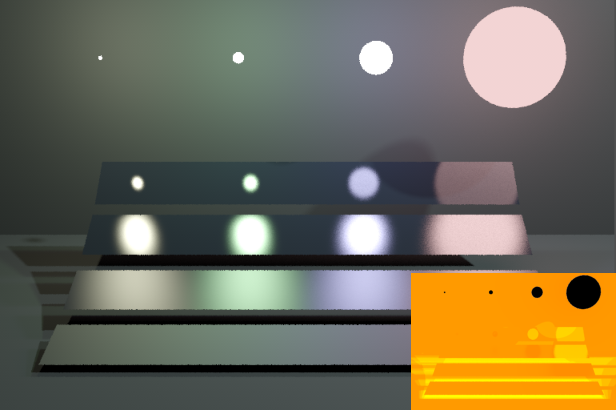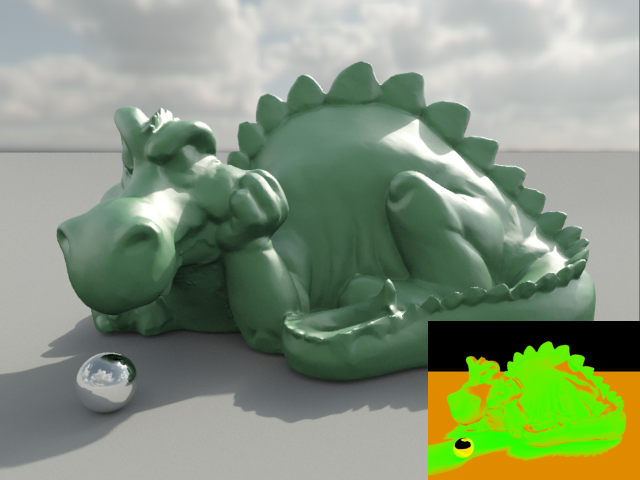Section: New Results
Axis 1:Analysis and Simulation
Second Order Analysis of Variance in Multiple Importance Sampling
Participants: H. Lu, R. Pacanowski, X. Granier
Monte Carlo Techniques are widely used in Computer Graphics to generate realistic images. Multiple Importance Sampling reduces the impact of choosing a dedicated strategy by balancing the number of samples between different strategies. However, an automatic choice of the optimal balancing remains a difficult problem. Without any scene characteristics knowledge, the default choice is to select the same number of samples from different strategies and to use them with heuristic techniques (e.g., balance, power or maximum). We introduced [16] a second-order approximation of variance for balance heuristic. Based on this approximation, we automatically distribute samples for direct lighting without any prior knowledge of the scene characteristics. For all our test scenes (with different types of materials, light sources and visibility complexity), our method actually reduces variance in average (see Figure 9 ). This approach will help developing new balancing strategies.
|
Rational BRDF
Participants: R. Pacanowski, L. Belcour, X. Granier
Over the last two decades, much effort has been devoted to accurately measuring Bidirectional Reflectance Distribution Functions (BRDFs) of real-world materials and to use efficiently the resulting data for rendering. Because of their large size, it is difficult to use directly measured BRDFs for real-time applications, and fitting the most sophisticated analytical BRDF models is still a complex task.
We have presented Rational BRDF [21] , a general-purpose and efficient representation for arbitrary BRDFs, based on Rational Functions (RFs). Using an adapted parametrization, Rational BRDFs offer 1) a more compact and efficient representation using low-degree RFs, 2) an accurate fitting of measured materials with guaranteed control of the residual error, and 3) efficient importance sampling by applying the same fitting process to determine the inverse of the Cumulative Distribution Function (CDF) generated from the BRDF for use in Monte-Carlo rendering.
Decomposing intensity gradients into information about shape and material
Participants: P. Barla, G. Guennebaud, X. Granier
Recent work has shown that the perception of 3D shapes, material properties and illumination are inter-dependent, although for practical reasons, each set of experiments has probed these three causal factors independently. Most of these studies share a common observation though: that variations in image intensity (both their magnitude and direction) play a central role in estimating the physical properties of objects and illumination. Our aim is to separate retinal image intensity gradients into contributions of different shape and material properties, through a theoretical analysis of image formation [11] .
We find that gradients can be understood as the sum of three terms: variations of surface depth conveyed through surface-varying reflectance and near-field illumination effects (shadows and inter-reflections); variations of surface orientation conveyed through reflections and far-field lighting effects; and variations of surface micro-structures conveyed through anisotropic reflections. We believe our image gradient decomposition constitutes a solid and novel basis for perceptual inquiry. We first illustrate each of these terms with synthetic 3D scenes rendered with global illumination. We then show that it is possible to mimic the visual appearance of shading and reflections directly in the image, by distorting patterns in 2D. Finally, we discuss the consistency of our mathematical relations with observations drawn by recent perceptual experiments, including the perception of shape from specular reflections and texture. In particular, we show that the analysis can correctly predict certain specific illusions of both shape and material.




